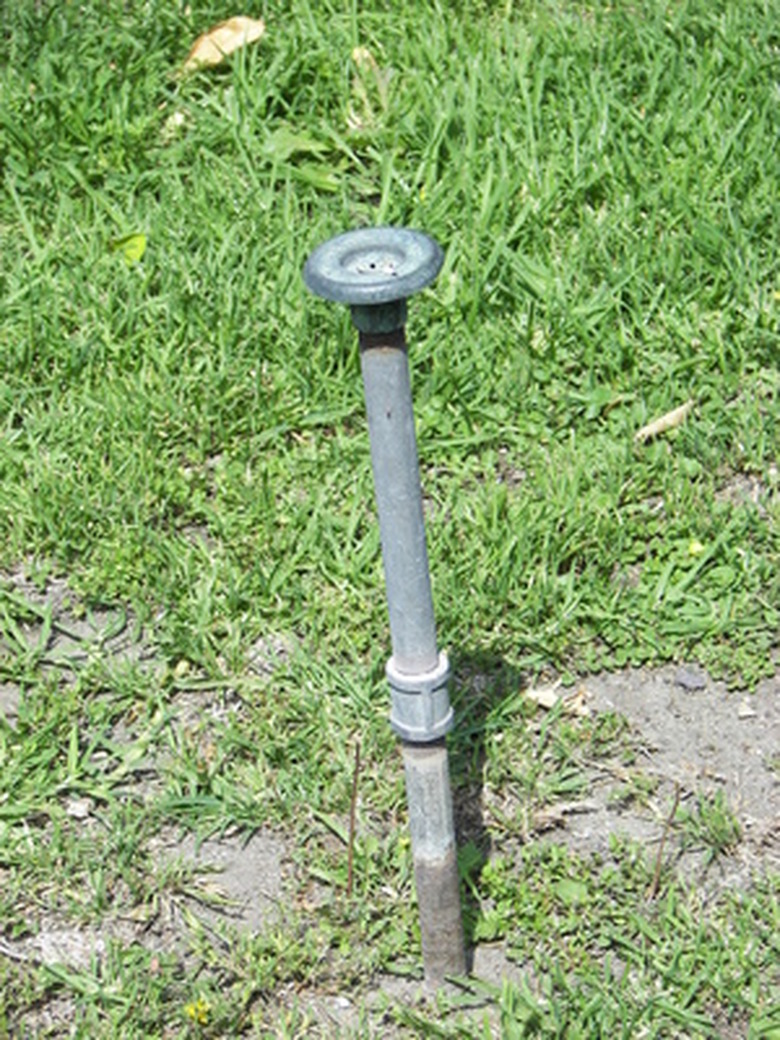My Sprinkler System Is Not Coming On
The average sprinkler system is simple in design and generally consists of four components: water supply, a control valve, distribution lines and sprinkler heads. The straightforward design of most sprinkler systems makes troubleshooting operational issues easy. Whether you have a manual or automatic sprinkler system, there are a few components you ought to check immediately if your sprinkler system is not coming on.
Automatic Sprinkler Control Panel
Automatic Sprinkler Control Panel
Automatic sprinkler timers reset following temporary loss of power. If an automatic timer controls your sprinkler system, check the control panel's display to determine if the timer has reset. Whereas properly set sprinkler timers display an accurate time reading, timers that are reset typically blink 12 o'clock or display an inaccurate time. Alternatively, many automatic sprinkler timers are battery operated. If your battery-operated sprinkler timer's display is blank, replace the timer's batteries.
Solenoid Connections
Solenoid Connections
A solenoid is the cylindrical actuator that protrudes from the top of automatic sprinkler valves. A set of low voltage wires connects the solenoid to the automatic sprinkler control panel. The control panel sends an electrical current to the solenoid to activate the valve's watering cycle. Although solenoid wires and connections are designed to withstand exterior conditions, they occasionally corrode or become disconnected. If your sprinkler system is not coming on, find your automatic sprinkler valves and inspect the solenoid wire connections. You can tighten or replace wire connections to restore your automatic system's operation.
Pipe Breaks
Pipe Breaks
A single broken supply pipe or distribution line can consume the entire flow of a sprinkler system. Without a water flow, sprinklers look like they aren't coming on. To determine if you have a pipe break in your sprinkler system, turn on the water supply to the system and inspect the ground for puddles or spouts of water. Repairing the broken pipe restores the systems flow rate and water pressure.
Sprinkler Breaks
Sprinkler Breaks
Like a broken pipe, a broken sprinkler head robs the rest of the sprinkler system of the necessary flow and pressure to function. Broken sprinklers are usually easy to find. If you suspect that a broken sprinkler is causing your sprinkler system to malfunction, turn on the water supply and insect each sprinkler. Some broken sprinklers shoot geysers of water into the air while others simply gush near the ground.
Individual Sprinklers Not Coming on
Individual Sprinklers Not Coming on
The most common cause of individual sprinklers not coming on is blockage. The thin spray opening of a sprinkler head easily becomes clogged with dirt and debris. Inspect malfunctioning sprinkler heads while the water supply is off, and clear blockages with a thin, straight-edged tool such as a screwdriver.
